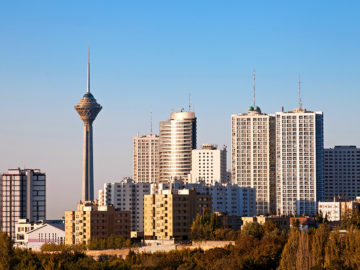
Niavaran Palace Complex is located in the North-East of Tehran. The palace dates back to Qajar Era, but was turned to museum 20 years after the 1979 Revolution. With more than five different buildings, a theatre, a gallery and the garden, Niavaran Palace is considered to be one of the biggest palaces of Tehran used during the hot weather of the Summer.
The Niavaran complex was built in the Qajar era and was expanded by the Pahlavi Rulers. The Qajar kings chose this place for its pleasant weather in the hot summers of Tehran, Fath Ali Shah was the person that ordered the construction of a palace in this area. Although it is currently part of the city, it used to be a remote place perfect for a quiet and delightful holiday. Mohammad Shah, Fath Ali Shah’s successor, added a small building but the real change happened when Naser Al Din Shah came to throne and ordered the construction of a building that was named after the man himself as Sahib Qaran. The last building to be added to the complex in Qajar Era was built by Ahmad Shah, the last Qajar King and is known as Ahmad Shah Kooshk. In Pahlavi’s time, some of the constructs were destroyed and new buildings with modern architecture replaced them. Today, the surviving sections of the palace includes The Niavaran palace, Sahib Qaranieh Palace, Ahmad Shah Kooshk (Pavilion), greenhouse, and school.
With more than five different buildings, a theatre, a gallery and the garden, Niavaran Palace is considered to be one of the biggest palaces of Tehran used during the hot weather of the Summer.
The Niavaran palace in two stories is one of the most visited sections of the complex. The first floor is where the Theatre, Audience Chamber, and Dining Chamber is located. Collections of invaluable Persian Carpets, 19th century French Chinaware and a handicraft shop are displayed here for the visitors. The second floor exhibits a Buddha Statue, some inscriptions about Buddha’s teaching both dating back to the third century and made of ivory. There are also some military uniforms and cloths left from the time Muhammad Reza Pahlavi was the king, and a painting of Karim Khan’s court on the stairs are other important sections of the second floor. On general, the second floor includes, Sitting Chamber with a desk that was used by Marie Antoinette, Evening Chamber with paintings of Reza Shah and Taj Ol Molouk, the Bed Chamber of King and Queen, Queen’s Dressing Room, Farahnaz’s Chamber (Mohammad Reza’s daughter), Alireza’s Chamber (King’s son) and servants section.

Ahmad Shah Kooshk or Pavilion was made to be used by Ahmad Shah in form of an 800 m house with a gable roof. The place is notable for the tile and brick work used in its decoration. The door is located in the south and a series of stairs starting near an oval shaped pool is the way of reaching the place.
The Saheb Qaran or Naser Al Din Shah’s Palace was built around 1850s, in two stories and includes sections such as Shah Neshin, Warm House, Bath house, and 40-50 small houses each with 4 rooms and one iwan built to house his wives. In the 31st year of his reign he titled the place as Sahib Qaranieh. After his death, his successor, Muzafar Al Din Shah made changes to the construct and destroyed a part of the Harem. He even signed the document that granted Constitution in this garden. The palace was also chosen for the wedding of Muhammad Reza Pahlavi to his first Wife Fouzieh that due to the cold weather was held in another palace but proves the palace’s importance in Qajar and Pahlavi Era.
Jahan Nama Museum is a building in West side of the Saheb Qaranieh Palace that was used as a private collection of the Queen. The Antique objects gifted to the Royal Family and all valuable objects bought by the Royal Family was displayed here to the guests and visitors of the palace. The place has 4 halls in the first floor and one hall in the basement.
The valuable objects of this place with the many documents founded here makes the palace one of the most important complex of Iran, narrating the history of Iran from a not a distant past.

